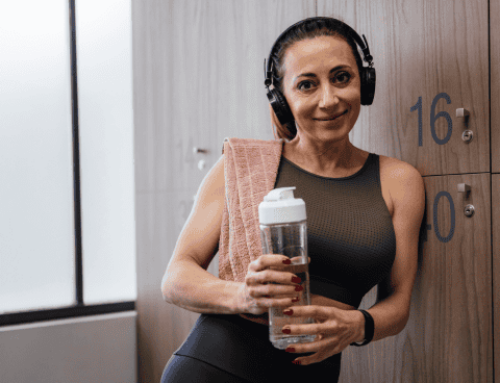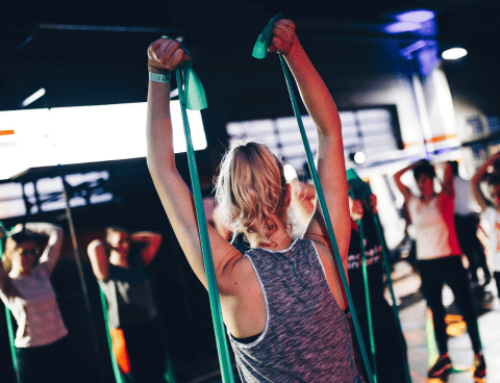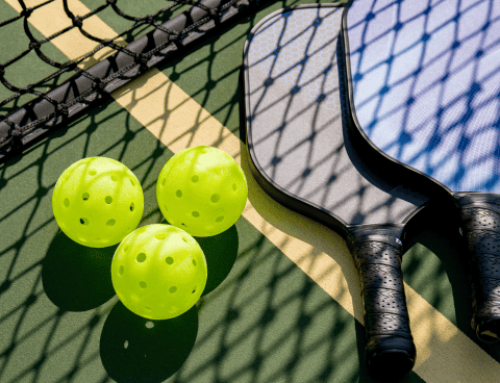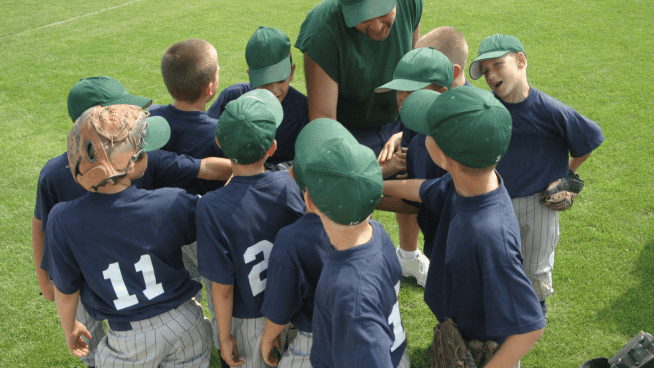Progressive Off-Season Training for Ice Hockey

Thinkstock
When it comes to sports that take a heavy toll on the body, ice hockey is unquestionably at the top of the list.
From the postural position required to skate effectively, to the intense metabolic demands and the tremendous amount of physical contact—it’s no wonder so many players come limping into the off-season.
Range of Motion and More
It is, of course, important to get players started on an off-season plan designed to increase their strength, speed and power. But the first step should be to help them restore lost range of motion and simultaneously work to rebalance strength levels around key joints like the shoulders, hips and knees. Training should also devote serious attention to getting out of the anterior pelvic tilt/severe lumbar lordosis for which hockey players are notorious—because, although it’s all well and good to increase range of motion around a joint, it makes little sense to do so (and may actually increase one’s risk of injury) without also developing strength throughout that newfound range.
At the same time, you don’t necessarily want to focus your strengthening efforts on muscle groups that are chronically tight and overused. Understanding this concept will help you make better sense of the training approach outlined below.
RELATED: The Best Hip Flexor Stretching Sequence for Hockey Players
Core Training
The same type of progressive thinking should also apply to core training. Piling difficult exercises like Wheel Rollouts, Medicine Ball Slams and Landmines on top of faulty pelvic mechanics is a sure-fire way to invite injury. Sure, these are all great drills; but when your hips are so tight that the risk of doing them outweighs any potential reward, you might want to take a pass—at least until you’ve done some initial work to address the issue and eventually improve your ability to adopt a more neutral spine posture while executing them.
RELATED: 3 Core Workouts That Translate to the Ice
Stretches and Strengthening
Once our players start filtering in at the end of the season, after we give them a week or so off to recover, our first phase of training combines active stretches for muscles that are chronically tight with strengthening exercises for muscles that directly oppose them. A perfect example for a hockey player would be an active stretch for the hip flexors and quads, followed immediately by a strengthening exercise for the glutes. Once the muscles that act on the front of the hip have been sufficiently loosened up by this combination, only then will we target them with a strengthening exercise, albeit at a slightly reduced volume.
For example, after the players perform a second set of the active hip stretch and glute strengthening drill, we add a hip-flexor-strengthening exercise like the Mini-Band High Knee March. This way we address the need to strengthen a muscle that’s been significantly shortened through overuse, but in way that doesn’t exacerbate the existing imbalance.
The same approach can be applied to other areas, the rationale being that by opening up the tight muscle group immediately prior, the strengthening exercise elicits a more forceful contraction through a larger range of motion in the opposing muscle group, while also producing an improved strength response when you go back to the previously restricted side of the joint.
Off-Season Hockey Workout
Below is a sample of what a Phase One total body workout looks like. Check out the following video to see all of the drills in action.
[youtube video=”SZEWWUTkBrc” /]Note: All workouts during this phase are preceded by 7 to 10 minutes of thorough soft tissue work using a high density foam roller, or Rumble Roller, along with either a tennis ball or a lacrosse ball, depending on the athlete.
For each letter grouping, perform exercises 1 and 2 twice before doing exercise 3. This keeps the training volume biased towards correcting any existing imbalances.
- A1: 3-Way Hip Flexor/Quadriceps Bench Stretch – 2×4 rounds
- A2: Unilateral Supine Bridge – 2×8-10
- A3: Mini-Band High Knee March – 1×5-6 reps per side, alternating
- B1: Active Isolated Pec Stretch – 2×8-10
- B2: TRX Row – 2×10-12
- B3: Neutral Grip Incline DB Press – 1×6-10
- C1: Lateral Shift – 2×5-6 per side, alternating
- C2: Mini-Band Hip Abduction – 2x 8-10 per side
- C3: Cross Body Skater’s Stance Adduction – 1×6-10 per side
- D1: Band Lat Stretch – 2 sets
- D2: High Kneeling Kettlebell Shoulder Press – 2×8-10 per side
- D3: Scapular Pull-Ups – 1 set
Core Circuit: Emphasis on reducing excessive lower back arch and activating deep core muscles.
- Iron Crosses – 2×10-12 alternating sides
- Long Lever Plank with Posterior Pelvic Tilt – 2×30 seconds
- Stability Ball Back Extension – 1 set
With this type of formula in place, a good strength coach or dedicated player can come up with any number of drill pairings to keep the workouts mentally stimulating while accomplishing the task at hand. This way, when a more traditional training approach is employed in Phase Two, athletes will have a much better movement foundation and will likely see a marked improvement in their strength. Best of all, they’ll rest assured knowing that the gains they are making will help them avoid injury by contributing to balanced development.
Read more:
[cf]skyword_tracking_tag[/cf]RECOMMENDED FOR YOU
MOST POPULAR
Progressive Off-Season Training for Ice Hockey

Thinkstock
When it comes to sports that take a heavy toll on the body, ice hockey is unquestionably at the top of the list.
From the postural position required to skate effectively, to the intense metabolic demands and the tremendous amount of physical contact—it’s no wonder so many players come limping into the off-season.
Range of Motion and More
It is, of course, important to get players started on an off-season plan designed to increase their strength, speed and power. But the first step should be to help them restore lost range of motion and simultaneously work to rebalance strength levels around key joints like the shoulders, hips and knees. Training should also devote serious attention to getting out of the anterior pelvic tilt/severe lumbar lordosis for which hockey players are notorious—because, although it’s all well and good to increase range of motion around a joint, it makes little sense to do so (and may actually increase one’s risk of injury) without also developing strength throughout that newfound range.
At the same time, you don’t necessarily want to focus your strengthening efforts on muscle groups that are chronically tight and overused. Understanding this concept will help you make better sense of the training approach outlined below.
RELATED: The Best Hip Flexor Stretching Sequence for Hockey Players
Core Training
The same type of progressive thinking should also apply to core training. Piling difficult exercises like Wheel Rollouts, Medicine Ball Slams and Landmines on top of faulty pelvic mechanics is a sure-fire way to invite injury. Sure, these are all great drills; but when your hips are so tight that the risk of doing them outweighs any potential reward, you might want to take a pass—at least until you’ve done some initial work to address the issue and eventually improve your ability to adopt a more neutral spine posture while executing them.
RELATED: 3 Core Workouts That Translate to the Ice
Stretches and Strengthening
Once our players start filtering in at the end of the season, after we give them a week or so off to recover, our first phase of training combines active stretches for muscles that are chronically tight with strengthening exercises for muscles that directly oppose them. A perfect example for a hockey player would be an active stretch for the hip flexors and quads, followed immediately by a strengthening exercise for the glutes. Once the muscles that act on the front of the hip have been sufficiently loosened up by this combination, only then will we target them with a strengthening exercise, albeit at a slightly reduced volume.
For example, after the players perform a second set of the active hip stretch and glute strengthening drill, we add a hip-flexor-strengthening exercise like the Mini-Band High Knee March. This way we address the need to strengthen a muscle that’s been significantly shortened through overuse, but in way that doesn’t exacerbate the existing imbalance.
The same approach can be applied to other areas, the rationale being that by opening up the tight muscle group immediately prior, the strengthening exercise elicits a more forceful contraction through a larger range of motion in the opposing muscle group, while also producing an improved strength response when you go back to the previously restricted side of the joint.
Off-Season Hockey Workout
Below is a sample of what a Phase One total body workout looks like. Check out the following video to see all of the drills in action.
Note: All workouts during this phase are preceded by 7 to 10 minutes of thorough soft tissue work using a high density foam roller, or Rumble Roller, along with either a tennis ball or a lacrosse ball, depending on the athlete.
For each letter grouping, perform exercises 1 and 2 twice before doing exercise 3. This keeps the training volume biased towards correcting any existing imbalances.
- A1: 3-Way Hip Flexor/Quadriceps Bench Stretch – 2×4 rounds
- A2: Unilateral Supine Bridge – 2×8-10
- A3: Mini-Band High Knee March – 1×5-6 reps per side, alternating
- B1: Active Isolated Pec Stretch – 2×8-10
- B2: TRX Row – 2×10-12
- B3: Neutral Grip Incline DB Press – 1×6-10
- C1: Lateral Shift – 2×5-6 per side, alternating
- C2: Mini-Band Hip Abduction – 2x 8-10 per side
- C3: Cross Body Skater’s Stance Adduction – 1×6-10 per side
- D1: Band Lat Stretch – 2 sets
- D2: High Kneeling Kettlebell Shoulder Press – 2×8-10 per side
- D3: Scapular Pull-Ups – 1 set
Core Circuit: Emphasis on reducing excessive lower back arch and activating deep core muscles.
- Iron Crosses – 2×10-12 alternating sides
- Long Lever Plank with Posterior Pelvic Tilt – 2×30 seconds
- Stability Ball Back Extension – 1 set
With this type of formula in place, a good strength coach or dedicated player can come up with any number of drill pairings to keep the workouts mentally stimulating while accomplishing the task at hand. This way, when a more traditional training approach is employed in Phase Two, athletes will have a much better movement foundation and will likely see a marked improvement in their strength. Best of all, they’ll rest assured knowing that the gains they are making will help them avoid injury by contributing to balanced development.
Read more:
[cf]skyword_tracking_tag[/cf]










